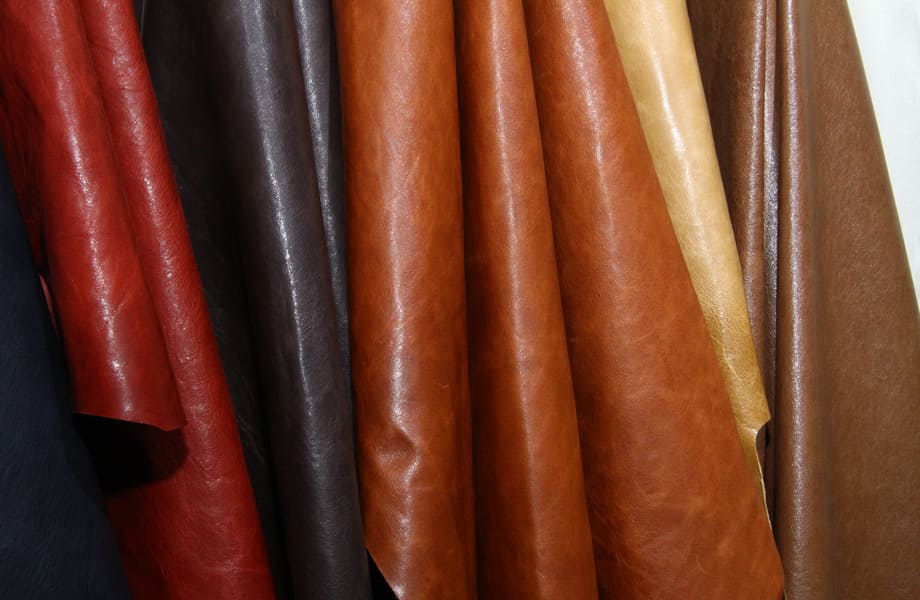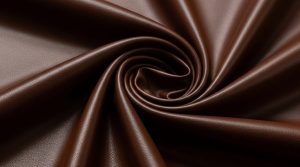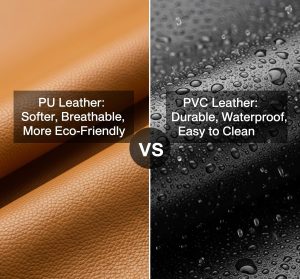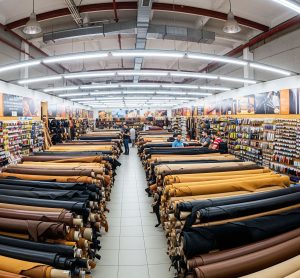
Acabas de hacerte con una elegante chaqueta o con ese par de botas imprescindibles que llevan la etiqueta "PU leather" y ahora te preguntas: ¿es auténtico el PU leather? Pues abróchate el cinturón, porque el cuero PU es como el agente encubierto del mundo de la moda. Tiene el aspecto y el tacto adecuados, pero no es exactamente lo que parece. Spoiler alert: no hay vacas implicadas en la fabricación de tu nuevo accesorio de moda. ¿Pero eso lo hace menos elegante? Por supuesto que no. Puede que el cuero PU no sea "auténtico" en el sentido tradicional, pero tiene mucho estilo, durabilidad y puntos éticos bajo la manga. Veamos qué hace que esta superestrella sintética triunfe en armarios y salones.
¿Por qué es una buena alternativa al tejido de cuero auténtico?
El cuero PU, abreviatura de cuero de poliuretano, es un material sintético diseñado para imitar el aspecto y el tacto del cuero auténtico. Sin embargo, a pesar de su apariencia, no procede de pieles de animales. En su lugar, el cuero PU se fabrica recubriendo un tejido base (a menudo algodón o poliéster) con una capa de poliuretano, que le da ese acabado similar al cuero. El resultado es un producto que tiene el atractivo estético del cuero sin estar fabricado con productos animales, lo que lo convierte en una opción popular para quienes buscan alternativas libres de crueldad. Así pues, aunque el cuero PU no es "auténtico" en el sentido tradicional, sin duda constituye una alternativa elegante y ética.
La verdad sobre el cuero PU
Aclaremos las cosas: el cuero PU no es cuero auténtico. Entra en la categoría de "piel sintética" porque no utiliza pieles de animales. Mientras que el cuero auténtico se obtiene procesando y curtiendo pieles de animales, el cuero PU es totalmente artificial y está compuesto por materiales sintéticos. La ventaja del cuero PU es que ofrece un aspecto similar por una fracción del coste, y es más fácil de mantener que el cuero auténtico. Sin embargo, la desventaja es que no desarrolla la misma pátina natural que la piel auténtica con el paso del tiempo y puede no durar tanto en términos de durabilidad. En última instancia, que el cuero PU sea "auténtico" depende de cómo defina usted la autenticidad: en términos de materiales, es falso, pero en términos de estilo, es una alternativa convincente.
diferencia entre cuero de pu y cuero auténtico
Al comparar el cuero PU con el cuero auténtico, salen a la luz varias diferencias. La más obvia es la del propio material: el cuero auténtico procede de pieles de animales, mientras que el cuero de poliuretano se fabrica sintéticamente. Esta diferencia de origen se traduce en distintas características: la piel auténtica suele ser más transpirable, flexible y duradera, y adquiere una pátina única con el paso del tiempo. Por el contrario, el cuero PU ofrece un aspecto más uniforme y suele ser resistente al agua, pero es menos transpirable y puede agrietarse o pelarse con el tiempo. Además, el cuero PU es significativamente más asequible y a menudo se prefiere para artículos de moda, muebles y accesorios en los que se desea el aspecto del cuero sin el coste asociado. Así pues, aunque el cuero PU es una opción elegante y práctica, carece de la calidad natural y la longevidad de su homólogo auténtico.
Cuero PU: Estilo real, origen sintético
Puede que el cuero PU no proceda de pieles de animales, pero es innegable que rebosa estilo. Fabricado con poliuretano, un material a base de plástico, el cuero PU está diseñado para parecerse mucho al aspecto y el tacto del cuero auténtico. Su superficie lisa y suave le confiere un aspecto casi indistinguible del cuero auténtico a primera vista. Sin embargo, su origen es totalmente sintético. Uniendo poliuretano a una base de tejido (como poliéster o algodón), los fabricantes crean una alternativa versátil y sin crueldad que satisface las tendencias de la moda a la vez que mantiene los costes bajos. Aunque carece de la profundidad orgánica y la textura de la piel auténtica, la piel de poliuretano no pierde su atractivo visual, lo que la convierte en una elección popular para todo tipo de productos, desde chaquetas hasta bolsos e incluso muebles.
El auge del cuero PU: ¿Es el cuero PU una alternativa al cuero auténtico?
En los últimos años, el cuero PU ha ganado popularidad, impulsado por la demanda de alternativas asequibles y libres de crueldad. Pero, ¿es realmente un buen sustituto del cuero auténtico? Desde el punto de vista estético, el cuero PU suele imitar muy bien el aspecto del cuero auténtico, lo que permite utilizarlo en moda, tapicería e interiores de automóviles. También es resistente al agua, más fácil de limpiar y más económico que el cuero auténtico, lo que lo hace atractivo para fines prácticos. Sin embargo, en términos de durabilidad y comodidad, el cuero PU no está a la altura. La piel auténtica es conocida por su longevidad, transpirabilidad y la pátina única que desarrolla con el tiempo. Por el contrario, el cuero PU puede desgastarse más rápidamente, con tendencia a agrietarse o pelarse tras un uso prolongado.
Conclusión
A fin de cuentas, ¿es el cuero PU "auténtico"? Bueno, es auténtico en cuanto a estilo, funcionalidad y versatilidad, pero no procede de un animal. Tanto si buscas una opción económica y libre de crueldad como si simplemente quieres un aspecto elegante similar al cuero sin el elevado precio, el cuero PU se ha ganado su lugar en el mundo de la moda y el diseño. Puede que no tenga la misma durabilidad o pátina natural que la piel auténtica, pero es una alternativa asequible, ética y de bajo mantenimiento. Así que, si buscas un material que se vea bien, se sienta bien y se alinee con tus valores, el cuero PU puede ser tu nuevo mejor amigo. Recuerda que, aunque no sea "auténtico" en el sentido tradicional del término, es lo bastante real como para llamar la atención.








